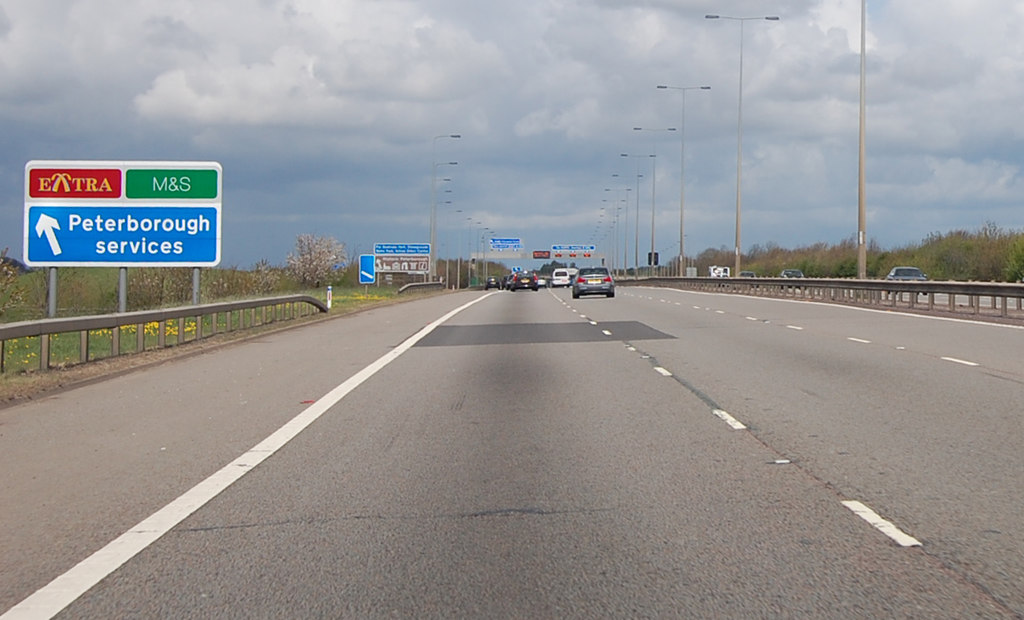Shadow tolls

|
| A portion of the A1(M) is funded through shadow tolls. This is the Peterborough services sign. |
Contents |
[edit] Introduction
Shadow tolls are a funding mechanism sometimes used for public private partnership (PPP) projects paid for through private finance initiatives (PFI). Private finance initiatives are a form of PPP that is sometimes used for central civil government projects.
A shadow toll is an arrangement between a public client and private contractor in which the tolls or fees are paid directly to the contractor. This arrangement tends to last from 20 to 30 years beyond the construction completion date of the project.
[edit] History
Shadow tolls are widely used in the UK. They were originally proposed by the Government in 1993. In 2012, the Prime Minister David Cameron mentioned shadow tolls as a method for funding additional road construction. Since that time, this funding method has become less popular for PFI projects. This may be partially due to the increasing use of - and preference for - performance-based availability payment funding options. In addition, PFI has been widely discredited as an efficient procurement route. For more information see: Private Finance Initiative.
[edit] Flexible financing
Under a shadow toll arrangement, the public sector client pays the contractor a specific amount that is taken from the tolls collected for the use of the highway, bridge, tunnel, roadwork or other built. If, for whatever reason, there are no tolls exacted on the project, the client pays the contractor a pre-arranged fee, which is sometimes based on a per-vehicle amount. In either instance, the shadow tolls serve as the basis for compensation paid for operating and maintaining the project.
The public and private entities whose assets increase in value - due to potential business generated by the traffic - may pay a portion of the financing through tolls to the owner or operator of the asset. This incoming revenue can sometimes be used in place of direct tolls collected from those who drive their vehicles on the road.
This diversification of revenue adds to the appeal of shadow toll arrangements, since they can attract several funding sources. They can also distribute benefits across these funding sources.
Shadow tolls have been commonly used for large infrastructure projects that are structured according to design-build-finance-operate-maintain (DBFOM), design-build-finance-maintain (DBFM) or design-build-finance-operate (DBFO) procurement routes.
[edit] PPPs and shadow tolls
PPPs are a very broad range of partnership in which the public and private sectors collaborate for some mutual benefit. They were first developed in the UK in the 1990s in the belief that private sector companies might be more efficient at providing certain services than public authorities and so could deliver better value for money for taxpayers.
PPPs can cover a range of partnerships to deliver infrastructure construction, renewal and maintenance. Partnerships can be arrangements made either with central or local government entities. For PPP projects, risk for designing, building (sometimes financing), maintaining and operating an asset are shared by both the client and the contractor.
[edit] Shadow tolls in the UK
Some shadow toll schemes in the United Kingdom are structured so the fee payments to the client decrease if the traffic increases. This strategy is meant to drive demand for usage of the road rather than the number of vehicles carried, motivating the contractor to provide a well performing asset that meets a desirable level of service.
Congestion charging serves as a form of shadow toll. Its purpose is not to increase traffic. Instead, it is meant to create a roadway system that moves freely where cars can travel safely. The significance of this variety of shadow tolls is that it removes the need to tie payments to usage and shifts the risk associated with demand back to the client.
Shadow toll roadway projects in the UK include:
- M1 Lofthouse to Bramham link road
- M40 Denham to Warwick
- M80 Stepps to Haggs
- A1 Darrington to Dishforth
- A1(M) Alconbury to Peterborough
- A13 Limehouse to Wennington (Greater London)
- A19 Dishforth to Tyne Tunnel
- A249 Stockbury (M2) to Sheerness
- A30 Exeter to Bere Regis]
- A417 Gloucester to Cirencest
- A419 Swindon to Cirencester
- A50 Stoke to Derby link
- A69 Carlisle to Newcastle
[edit] Case study: Dulles Greenway
In the state of Virginia, the Dulles Greenway is a 14-mile shadow toll highway project that was privately financed and constructed between 1993 and 1995. The initial agreement reverts operational responsibilities back to the state in 2036.
To finance the Greenway, funding was obtained through loans that were to be repaid with toll revenues. However, a lack of traffic failed to generate the projected amount, so tolls - and legal speed limits - were increased on the road to entice drivers to use the highway. Revenue continued to miss targets, prompting the state to renegotiate a 20 year extension to the original agreement.
[edit] Related articles on Designing Buildings Wiki
Featured articles and news
Licensing construction in the UK
As the latest report and proposal to licence builders reaches Parliament.
Building Safety Alliance golden thread guidance
Extensive excel checklist of information with guidance document freely accessible.
Fair Payment Code and other payment initiatives
For fair and late payments, need to work together to add value.
Pre-planning delivery programmes and delay penalties
Proposed for housebuilders in government reform: Speeding Up Build Out.
High street health: converting a building for healthcare uses
The benefits of health centres acting as new anchor sites in the high street.
The Remarkable Pinwill Sisters: from ‘lady woodcarvers’ to professionals. Book review.
Skills gap and investment returns on apprenticeships
ECA welcomes new reports from JTL Training and The Electrotechnical Skills Partnership.
Committee report criticises UK retrofit schemes
CIOB responds to UK’s Energy Security and Net Zero Committee report.
Design and construction industry podcasts
Professional development, practice, the pandemic, platforms and podcasts. Have we missed anything?
C20 Society; Buildings at Risk List 2025
10 more buildings published with updates on the past decade of buildings featured.
Boiler Upgrade Scheme and certifications consultation
Summary of government consultation, closing 11 June 2025.
Deputy editor of AT, Tim Fraser, discusses the newly formed society with its current chair, Chris Halligan MCIAT.
Barratt Lo-E passivhaus standard homes planned enmasse
With an initial 728 Lo-E homes across two sites and many more planned for the future.
Government urged to uphold Warm Homes commitment
ECA and industry bodies write to Government concerning its 13.2 billion Warm Homes manifesto commitment.
From project managers to rising stars, sustainability pioneers and more.
Places of Worship in Britain and Ireland, 1929-1990. Book review.
The emancipation of women in art.
























